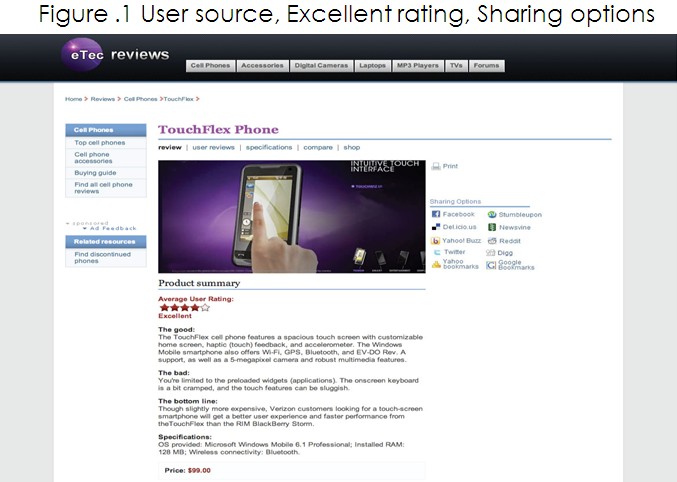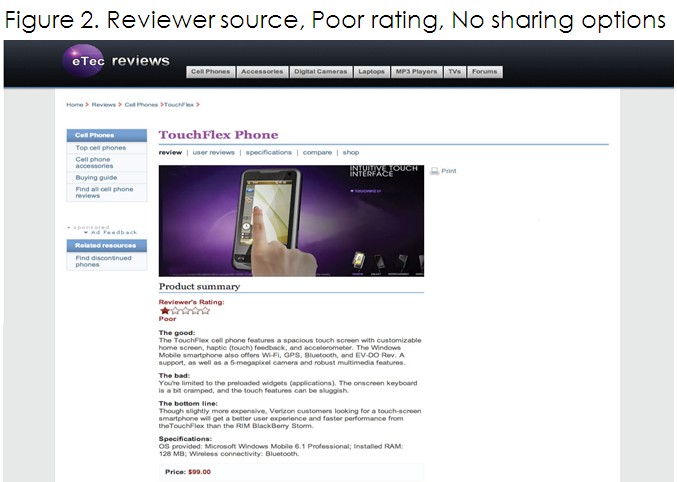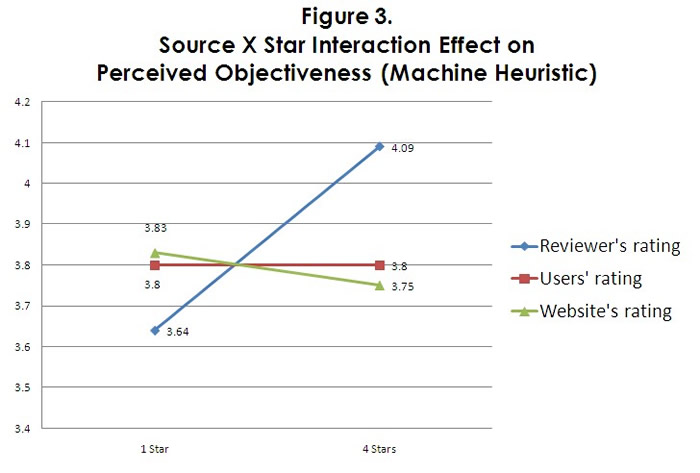Media Effects Research Lab - Research Archive
To share or not to share, that is the question
Student Researcher(s)
Pamela Jo Brubaker (Ph.D Candidate);
Andrew Kegerise (Ph.D Candidate);
Hyang-Sook Kim (Ph.D Candidate);
Kiwon Seo (Ph.D Candidate);
Faculty Supervisor
INTRODUCTION
Do visual cues afforded by technology influence website users’ perception of a product? Do people evaluate a product more positively when they are able to share information about the product with others online? The current study examines the psychological effects of heuristic cues that appear on a product review website to gain a better understanding of online agency as proposed in the MAIN model (Sundar, 2008a).
RESEARCH QUESTIONS
RQ1: What is the relationship between technological affordances (rating source, star rating, and sharing options) and the authority, machine, bandwagon, and identity (sense of control and sense of community) heuristics?
RQ2: What is the relationship between technological affordances (rating source, star rating and sharing options) and credibility of the product review website?
RQ3: What is the relationship between technological affordances (rating source, star rating, and sharing options) and attitudes towards the product, attitudes towards the product review website, and purchase intention?
RQ4: Do the authority, machine, bandwagon, and identity heuristics mediate the relationship between technological affordances (rating source, star rating, and sharing options) and perceptions of credibility?
RQ5: Will perceptions of credibility mediate the relationship between technological affordances (rating source, star rating, and sharing options) and attitudes towards the product, attitudes towards the product review website, and purchase intention?
METHOD
Five research questions were explored using a 2 (star rating: one star vs. four star) × 3 (source rating: reviewer’s rating vs. average user’s rating vs. website rating) × 2 (sharing options: presence vs. absence) between-participants online experiment. Participants (N = 458) were exposed to identical product reviews for a haptic cell phone, with variations in star-rating cues, source cues, and sharing options (see Figure 1 and 2 for examples of the stimuli).


RESULTS
Participants rated a product and a review website more positively when they viewed a high rated (four stars) product review and thereby showed greater purchase intentions than products rated poorly (one star). In addition, social media and bookmarking options led participants to perceive a product more positively. This relationship was mediated by credibility toward the website. Moreover, perceived authority and bandwagon heuristics mediated the relationship between presence of sharing options and credibility perceptions of the website. Finally, the interaction effect between review source and star ratings on perceived objectiveness showed the effect of the expert source was greatly dependent on the number of stars whereas other users and the website did not affect participants’ perception of objectiveness of the website in relation to star ratings (see Figure 3).

CONCLUSION
The findings not only supported the essential argument of the MAIN model, particularly effects of agency cues on a product review website, but also underscored the importance of online sharing applications on designing information-based websites. Specifically, the current study showed that presence of sharing options not only contributed to building credibility toward the review website but also lead to more favorable product attitudes. The findings also demonstrated that the simple presence of sharing affordances leads to increases in perceptions of authority and bandwagon heuristics.
For more details regarding the study contact
Dr. S. Shyam Sundar by e-mail at sss12@psu.edu or by telephone at (814) 865-2173

